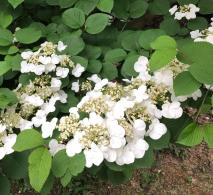Get Additional 5% Off 1st Order
Myrtus Communis Tarentina
1. Add items to basket
2. Go to the basket
3. Enter your postcode in Delivery Price Check
Plant shape: Bush
Pot size: 10 Litres
Plant ID: 10140 64
click to view this plant size >Plant shape: Bush
Pot size: 18 Litres
Plant ID: 13035 64
click to view this plant size >
Myrtus Communis Tarentina, also known as Tarentum Myrtle or Common Myrtle, is a compact, dense evergreen shrub with scented foliage. It originates from the Mediterranean region where it grows wild and profusely. Common Myrtle also grows well in the UK and the sub species Tarentina Myrtle is particularly good for smaller gardens and compact areas.
Small narrow leaves cover this shrub throughout the year but in summer, around July to August, its attractive pink buds burst into white flowers. Later these white flowers develop into white berries which contrast beautifully with the glossy green foliage.
Myrtus Communis Tarentina is one of the more compact bushy myrtles. It will grow to a height of one to one and a half metres and spread over the same distance within ten to twenty years.
How Hardy Is Myrtus Communis Tarentina?
Myrtus Communis Tarentina is hardy through most of the UK but it may struggle in central or northerly locations and experience die back or foliage damage. You can easily prevent this by sheltering your Tarentum Myrtle from cold drying winds.
How To Use Myrtus Communis Tarentina
Myrtus Communis Tarentina is a dwarf species so it fills small or low spaces easily. Myrtle looks good in any planting arrangement or flower border.
Pot grown myrtles are happy if watered regularly and this arrangement enables you to move them around your garden filling dull spots with its evergreen foliage. Place a container near an open window or your doorstep to experience the fragrance on summer days. In winter an evergreen myrtle might be the only colour you see, so plant one where you can admire it from a window.
Tarentum Myrtle also makes a good divider or low hedge when several are grown in a row. Smaller spaces and the busy gardener will benefit from its slow growing habit.
How To Care For Myrtus Communis Tarentina
Tarentum Myrtle grows best in fertile soils that are well drained, but it’s not overly fussy about soil. Sand, clay, chalk or loamy positions of any pH will suit it.
To make the most of Tarentum Myrtle its best placed in a sunny, sheltered spot. Cold winds damage foliage and reduce growth, but a gust-free warm position will boost scent, growth and flower production.
Mulch around the base of your Tarentum Myrtle in spring with some well-rotted manure or soil improver too as this ensures it receives all the nutrients it needs for the best flower display.
The pretty evergreen Tarentum Myrtle is tough and adaptable. It also has the RHS Award of Garden Merit, so you can be sure you’re choosing a top notch plant whether you want a scented plant for your courtyard or an attractive filler for a large border.
See also Common Myrtle Plant, a larger version of Myrtle Bush.













